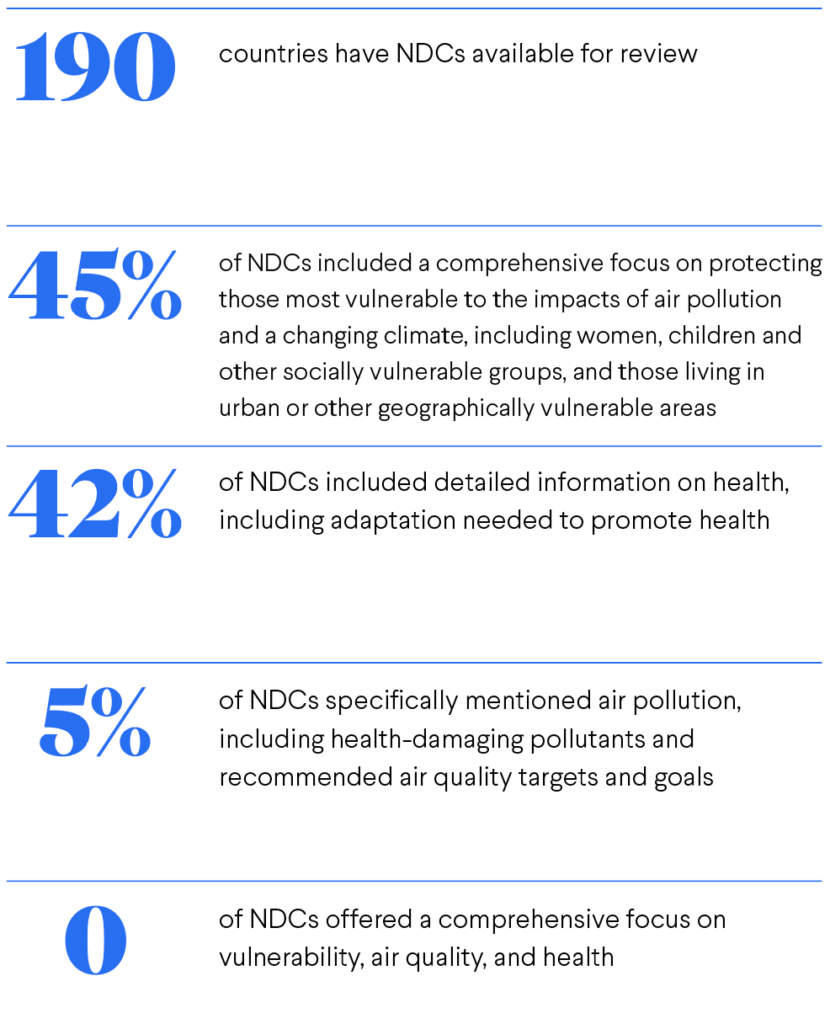
Climate mitigation approaches have historically focused on measures to reduce carbon emissions to avoid their long-term impacts. However, this narrow focus fails to recognize the immediate benefit of certain other climate actions with short-term benefits, such as efforts to improve air quality. This limited focus on only long-term impact inadvertently slows global efforts to improve public health, which is especially urgent amidst current environmental conditions and a global pandemic. Health, climate and air quality stakeholders tend to operate in separate silos, which means that policy and advocacy levers connecting air quality, health and climate have been underutilized. Bridging these priorities, through the inclusion of more comprehensive and accelerated clean air action in every country’s Nationally Determined Contributions(NDCs),has the potential to progress on many sustainable development goals, leading to measurable short-and long-term benefits. Incorporating a targeted focus on the health and air quality benefits of climate mitigation strategies within NDCs to address climate change can foster collaboration across sectors and accelerate design and execution of cost-effective actions for maximum impact.
Approach
Vital Strategies evaluated the extent of these missed opportunities to address social vulnerability, air pollution and health through climate action. We reviewed all Nationally Determined Contributions (NDCs), or country action plans, submitted to UNFCCC to evaluate the extent to which vulnerability, health and air quality have been considered
Snapshot of Results

Regional Results
Country-Specific Results
Summary of Recommendations for Climate Action for Clean Air and Health
- Elevate the importance of the air quality and health benefits of climate action.
- Acknowledge that climate change’s greatest impact is on the most socially, geographically, and economically vulnerable populations.
- Target climate actions to improve public health and health systems.
- Focus on reducing emissions of the most health damaging pollutants.
1Data Sources
| Data | Sources of Data | Dates extracted |
| UN Regional Groups | United Nations Department for General Assembly and Conference Management | October 17th, 2021 |
| Country NDC Submissions to UNFCCC | NDC Registry | October 1st-October 24th, 2021 |
| GDP per Capita | The World Bank | October 29th, 2021 |
| Average annual PM2.5 concentrations (2019) | State of Global Air | October 17th, 2021 |
| Annual air pollution-related illness and death (2019) | Institute of Health Metrics and Evaluation | October 22nd, 2021 |